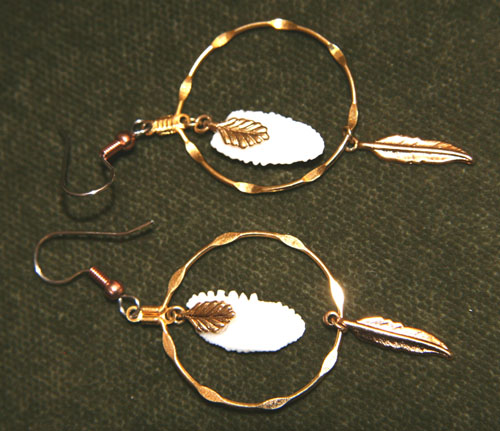
The Saltwater Magazine for Gulf Coast Fishing!
FISHING FORECASTS | FISHING CALENDARS | ARTICLE ARCHIVE | ORDER

Otoliths - Fish Ivory
By John Hook
The Bay Naturalist
![]()
| CURRENT
MOON lunar phases |

Otoliths Scientific Function and Feminine Fashion...
Knowing how fast fish grow is tremendously important to successful stock management and there are a number of ways these rates are determined.
Tag and release studies can be very helpful in providing age and growth information and they have the added benefit of providing migratory data. Unfortunately these studies are relatively expensive and suffer from the difficulty of having to catch the same fish twice and depending on the recapture fisherman to send in the tag.
There is also the problem of having well intentioned amateurs providing measurement and location data that may not be either as precise or accurate as you would like.
Even with these limitations, when these studies are well funded and run for a long enough time they provide information that really can't be gathered any other way.
There is another method that has been used for quite some time that provides similar growth rate information without the large funding constraints or need to double catch the fish. In certain circumstances it can even supply some of the same migratory information that you get from tagging. Unlike tagging though, with this method if you change your mind about using your samples for science they can be made into attractive "fish ivory" jewelry that might be just the unusual gift you're looking for this winter.
This versatile aging method uses otoliths, essentially the fish's ear bones, and it's based on the same idea that is used to age trees. All you have to do is take a thin cross section from the otolith, count the rings and you have the age of the fish.
Well, it gets a bit more complicated than that. Calcium compounds are deposited on the otoliths constantly and the rings are formed when the rate of deposition either really speeds up during times when food is abundant or slows dramatically when resources are in short supply.
In waters that see strong seasonal temperature changes between winter and summer the rings are easier to distinguish, but it's a little more challenging in areas without such extremes. Fish with very rapid growth or with very short life spans are difficult to age this way but most species yield enough information to make this technique valuable. These ear bones can give up a surprising amount of information besides how fast the fish grew. Because inshore marine water chemistry differs quite a bit depending on what river water brings to the party the otolith layers are slightly different in chemistry depending on the water where the fish lives.
You can analyze the difference in chemical composition in the layers and match those chemical profiles to areas within the fish's range to trace migratory pathways and maybe even determine where the fish was spawned. Stretching the science a bit more, fossil fish have given up otoliths that provide information to paleontologists on ancient climate and oceanic dead zones. Otoliths have been an information gold mine for scientists for many years, but they're not the only people who find them valuable.
Otoliths have been used as good luck charms and jewelry by Native American tribes as well as other cultures for thousands of years.
That may be the foundation for the small otolith jewelry industry in that has sprung up in Alaska and Newfoundland. All manner of earrings, bracelets and pendants featuring otoliths are made and marketed by commercial fishermen.
If you're interested in finding some of these unique pieces you'll probably needed to spend some time on eBay or surfing the Web because you won't find them at the local chain store down at the mall. Plug "otolith earrings" into any search engine and you'll find what you're after.
Those of you that are inclined to create your own will be pleased that the drum family is famous for sporting large otoliths that would make great jewelry. Keep in mind though that selling otolith jewelry is essentially the same as selling fillets in the eyes of fish and game departments so only make it for your own use.
Collecting your own fish ivory is pretty easy. The exact location and extraction method is a little different for each species, but in general the otoliths lie just behind and above the eyes along either side of the spinal cord just inside the back of the fish's skull.
A sharp knife and a pair of tweezers or forceps is all you need to get them out. Gently wash them off and let them dry out for a few days before you start your jewelry project. Whether fashion, function or simply a keepsake motivates you to collect these pearls, otoliths are certainly a fascinating treasure.

